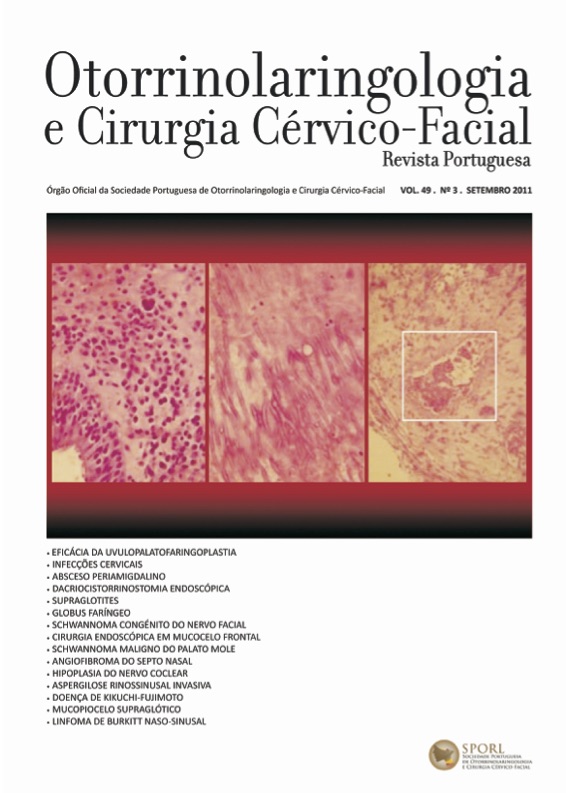Peripheral facial paralysis: A clinical case of congenital facial nerve schwannoma
DOI:
https://doi.org/10.34631/sporl.178Keywords:
Facial schwannoma, peripheral facial palsy, congenital, pediatric, childAbstract
Peripheral facial paralysis can result from various causes, being idiopathic in 75% of cases and secondary in 25%1. Occurs not only in adults but also in children, 2 to 4 times less frequently. Facial schwannoma is an example of a neoplastic cause, accounting for about 5% of all diagnosis. Clinical, imagiologic and pathological data are necessary for diagnosis, due to lack of specific symptoms. The treatment of the peripheral facial paralysis is still controversial and depends on the underlying cause. The authors present the case of a 3 years olds boy, referred to ENT consultation for congenital peripheral facial palsy, with progressive worsening. The diagnostic procedures carried out revealed a lesion suggestive of facial nerve tumor (schwannoma). The authors review this clinical entity, including main diagnostic tests and therapeutic approach.
Downloads
References
Finsterer J. Management of peripheral facial nerve palsy. Eur Arch Otorhinolaryngol. 2008 Jul;265(7):743-52.
S. Santos-Lasaosa et al. Parálisis facial periférica: etiologia, diagnóstico y tratamiento. REV NEUROL 2000;30:1048-1053.
Kirazli T. et al. Facial nerve neuroma: clinical, diagnostic, and surgical features. Skull Base. 2004 14(2):115-20
Chung JW, Ahn JH, Kim JH, Nam SY, Kim CJ, Lee KS. Facial nerve schwannomas: different manifestations and outcomes. Surg Neurol. 2004 Sep;62(3):245-52.
Ulku CH, Uyar Y, Acar O, Yaman H, Avunduk MC. Facial nerve schwannomas: a report of four cases and a review of the literature. Am J Otolaryngol. 2004 Nov-Dec;25(6):426-31.
Angeli SI, Brackmann DE. Is surgical excision of facial nerve schwannomas always indicated? Otolaryngol Head Neck Surg. 1997 Dec;117(6):S144-7.
Kim CS, Chang SO, Oh SH, Ahn SH, Hwang CH, Lee HJ. Management of intratemporal facial nerve schwannoma. Otol Neurotol. 2003 Mar;24(2):312-6.






